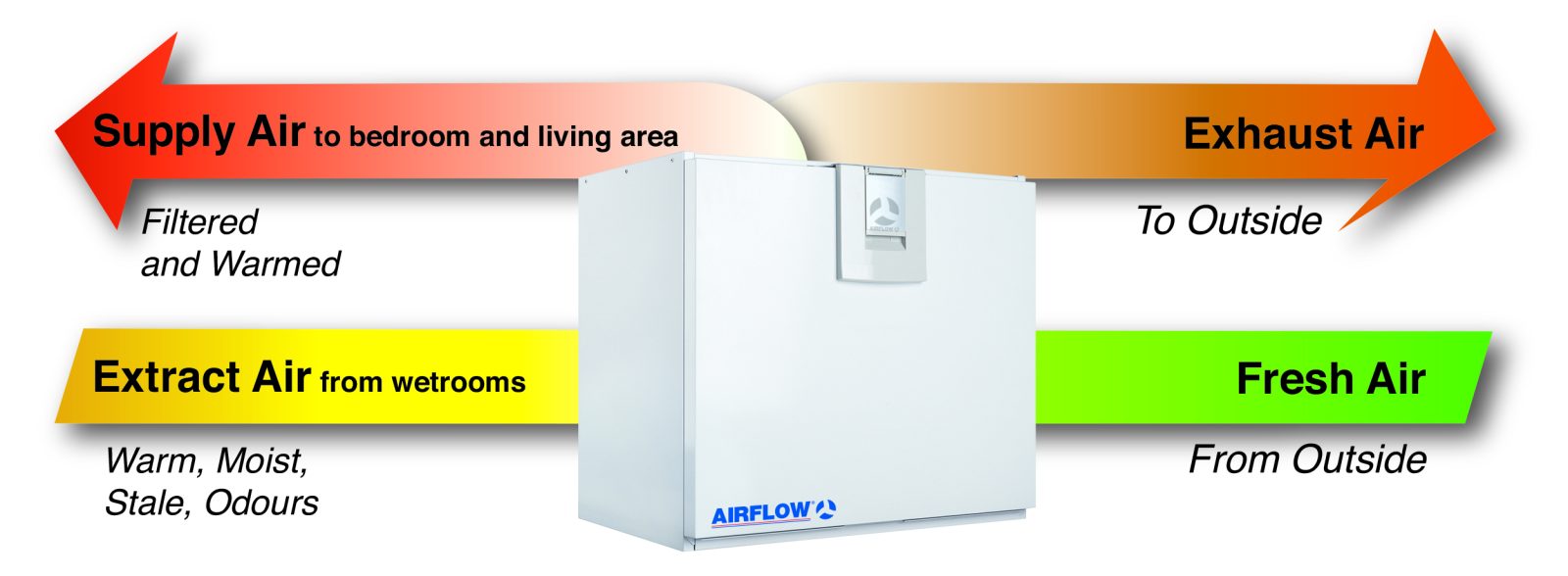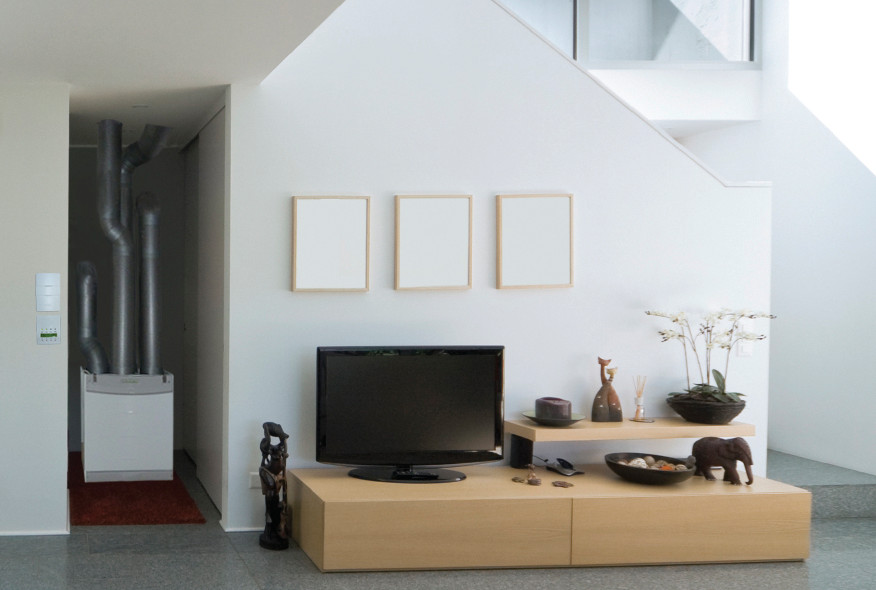Mechanical Ventilation and Heat Recovery (MVHR) systems are a big ticket item that work very well in a self and custom build. This is because they can be designed in at the very earliest stages of your project, to work in conjunction with your building’s fabric.
But what do you need to understand about MVHR to ensure that it’s the right choice for you? NaCSBA member Airflow shared some of its experience with the Self Build Portal, to help you decide if investing in MVHR is the right choice for you.
Why MVHR?
Our changing climate means that homes in the UK need to not only provide heating requirements but also need to stand up to extreme heat for prolonged periods of time.
MVHR offers your the opportunity to control your internal environment, especially when combined with a fabric-first approach to building. This is because it needs an airtight building envelope to work efficiently, so how you build is as important as the MVHR system itself.
Efficient energy usage
The heat recovery element of MVHR is an extremely energy efficient process, as no heat is lost, so reducing demand. Conversely, in Summer, many systems bypass this exchange process, to bring cool fresh air in from outside and allowing internal heat to be expelled. Be sure to ask when specifying if your system has an automatic bypass, or partial bypass for Spring and Autumn.
Used well this allows some degree of cooling, especially as the MVHR system will remove humid air, which can in itself make you feel warmer. Removing excess humidity is also important to reduce mould build up.

How does MVHR work?
Heat recovery captures and retains heat that would otherwise be lost as it leaves the building. MVHR removes the heat from stale air as it is extracted from the building. This is passed through a heat exchanger that transfers the heat from the outgoing air to fresh air entering the building. Incoming air is filtered to remove impurities, such as allergens, heated and then distributed around the building.
This requires good levels of airtightness in your build envelope to prevent air leakage, as well as ducting and the actual unit where the exchange takes place. MVHR does away with stand alone extraction systems, such as hob and bathrooms extractors.
Air conditioning or MVHR?
In regards to cooling Airflow has some useful insight on comparing the two systems.
Primarily, air conditioning will cool more powerfully, but it does this by recirculating the stale air that is already in the room.
Whereas air conditioning is reliant on a unit per room, with associated running costs and local noise, MVHR is a whole house system. This means there is one piece of plant, in the loft or plant room, and ducts in individual rooms, rather than entire units.
As well as fresher air and a quieter system, this can result in lower energy usage, but check if this translates into lower running costs.
MVHR is better at maintaining a constant temperature using fresh air, but is more reliant on external air temperatures to secure this. Therefore regulating the temperature early in the day will result in a cooler building.
A more powerful MVHR system can move larger volumes of air which can help with cooling, so again, speak to your specifier about your expectations for the system.
When to find out more
MVHR needs to considered early on in your plans, and needs to work in harmony with your build model. If you are considering it speak to system manufacturers/installers and do your research in advance.
This can be from neutral sources, such as magazines, as well as supplier websites (although be aware they are promoting MVHR). The Passivhaus Trust and Green Building Store are also good sources of information, and the NSBRC runs several courses on heat and energy.
If you decide it is for you, ensure that your architect and package manufacturer are planning for it from the get go, and that any follow on trades are aware of the need for airtightness. This needs a ‘fabric first’, whole house approach, and this might affect window orientation and shading and solar gain. For example, trickle vents on windows should be avoided, as they will reduce the airtightness.
Images: Airflow




